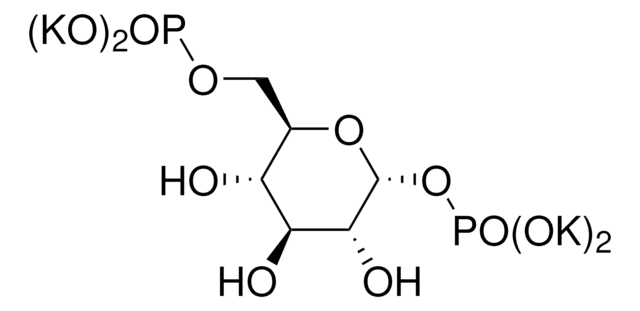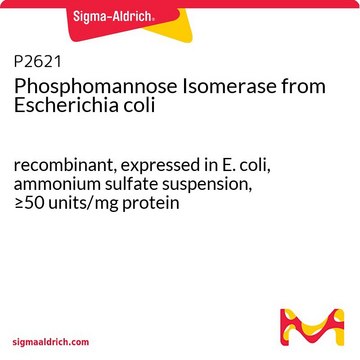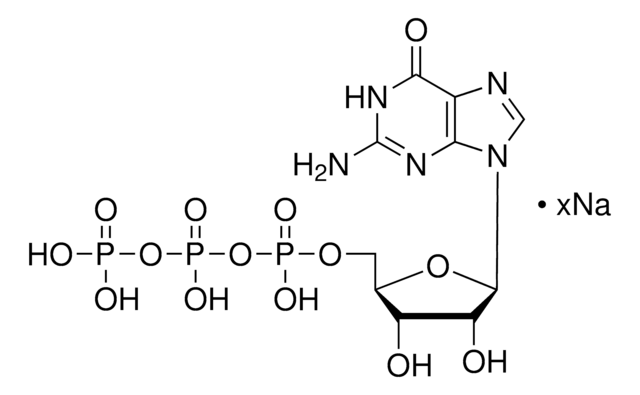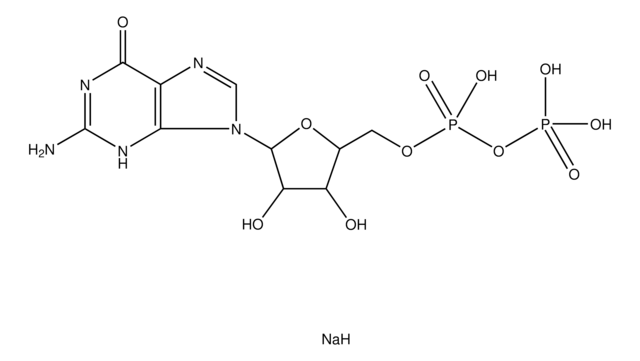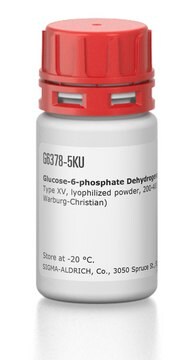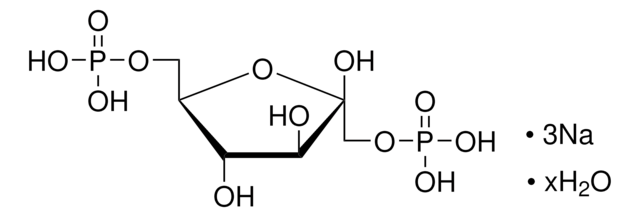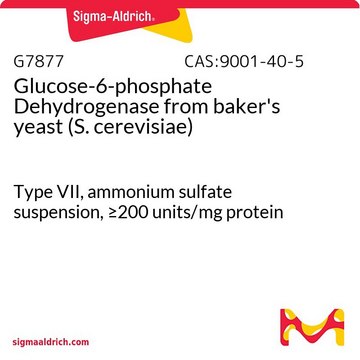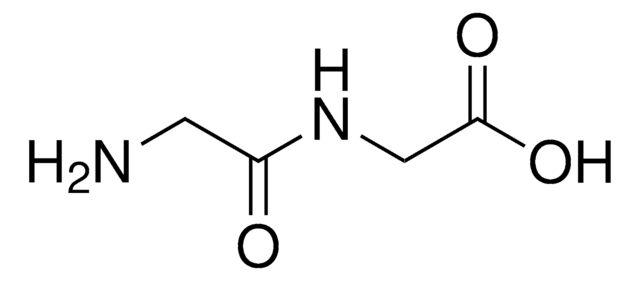G5875
α-D-Glucose 1,6-bisphosphate tetra(cyclohexylammonium) salt hydrate
≥95% dry basis
Synonym(s):
α-D-Glucose 1,6-diphosphate tetra(cyclohexylammonium) salt hydrate, Glc-1,6-PP.4CHA
About This Item
Recommended Products
biological source
synthetic
Quality Level
Assay
≥95% dry basis
form
powder
color
white
solubility
water: 50 mg/mL, clear, colorless to very faintly yellow
storage temp.
−20°C
SMILES string
[H]O[H].NC1CCCCC1.NC2CCCCC2.NC3CCCCC3.NC4CCCCC4.O[C@H]5[C@H](O)[C@@H](COP(O)(O)=O)O[C@H](OP(O)(O)=O)[C@@H]5O
InChI
1S/4C6H13N.C6H14O12P2.H2O/c4*7-6-4-2-1-3-5-6;7-3-2(1-16-19(10,11)12)17-6(5(9)4(3)8)18-20(13,14)15;/h4*6H,1-5,7H2;2-9H,1H2,(H2,10,11,12)(H2,13,14,15);1H2/t;;;;2-,3-,4+,5-,6-;/m....1./s1
InChI key
DMUBREKUECBHKK-KMWDTYPGSA-N
Looking for similar products? Visit Product Comparison Guide
Application
Biochem/physiol Actions
Quality
Other Notes
Storage Class Code
11 - Combustible Solids
WGK
WGK 3
Personal Protective Equipment
Choose from one of the most recent versions:
Already Own This Product?
Find documentation for the products that you have recently purchased in the Document Library.
Customers Also Viewed
Protocols
This procedure may be used for all Phosphoglucomutase products except for Phosphoglucomutase, Catalog Number P4109.
Our team of scientists has experience in all areas of research including Life Science, Material Science, Chemical Synthesis, Chromatography, Analytical and many others.
Contact Technical Service